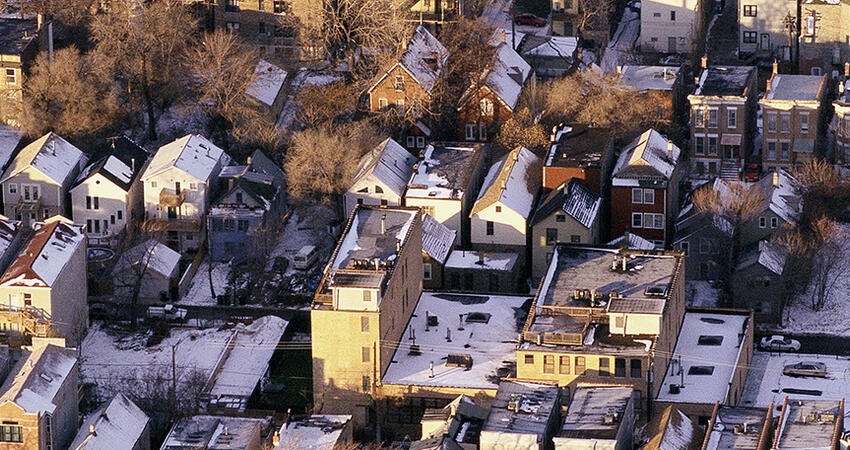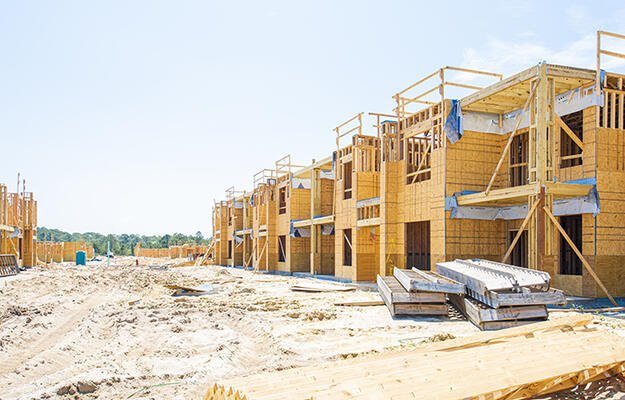
Combining Policy and a Vision to Enable the Rebirth of Struggling Neighborhoods
by Maya Brennan
As awareness has grown about housing’s pivotal role in supporting quality of life and community well-being, national, state, and local leaders are developing comprehensive solutions that improve housing affordability, reduce concentrated poverty, and facilitate partnerships to further improve housing-related outcomes. Yet, blighted or abandoned properties—whether residential, commercial, or industrial—impede such housing and neighborhood revitalization efforts and can hurt residents’ health and impede individual success. According to research funded through the How Housing Matters to Families and Communities initiative, kindergarten readiness is related to where children grow up: children living near foreclosures or in a poor-quality home have weaker educational achievement, even at an early age.
While abandonment is more common in places that have experienced major economic or population shifts, such as communities in the Great Lakes region, near the Mississippi River, or along other historic shipping routes, growing and relatively new communities have pockets of underutilized and poorly maintained properties. Communities with large populations of marginalized groups are particularly vulnerable, as the shortage of decent and affordable homes gives low-income households few options. Recent reporting from the New York Times has highlighted the risk of foreclosed properties reentering the supply with contracts that attempt to put all liability for uninhabitable conditions on the new occupants. In communities with an older housing stock, these transfers have led to preventable cases of lead poisoning.
Even from a financial perspective, the high cost of an abandoned home—to restore, demolish, or allow to sit as is—makes preventing abandonment an essential policy goal for all local governments. Abandoned properties generate no tax revenue, reduce the value of nearby properties, and create expensive problems for fire and police departments and other municipal entities. In Atlanta, the city pays between $1.6 million and $2.9 million annually in police, fire, and code enforcement and other direct service costs related to blighted properties, according to research completed in 2016. The associated reduction in property values takes another $985,000 to $2.7 million out of the city’s coffers. A US Department of Housing and Urban Development Evidence Matters article from 2014 presented findings from nearly a decade of cost studies, including Philadelphia’s lose-lose situation, in which around 40,000 vacant private properties cost the city more than $20 million annually to address while reducing the city’s tax revenue by around $5 million annually. And that does not count the costs of the city-owned inventory of blighted properties. Despite this, demolition costs may be prohibitive at scale. A typical demolition may cost $4,800 to $7,000 per property. The per-property cost of demolition can rise as high as $40,000 if the problem property is attached to an occupied dwelling.
The value of preventing and rapidly addressing abandonment and the net budgetary gain from a strong code enforcement department becomes clear. The visionary and future-focused element of the work, however, can be easily overlooked when removing problems rather than creating something new. Along with prevention and abatement work, communities must think about interim strategies, such as urban greening, that allow short-term improvements to occur alongside long-term community-connected efforts to develop and implement a vision for the future reuse of the property.
A fresh look shows the potential for problem properties to be restored or reenvisioned to create safe and decent housing while improving quality of life for the existing low-income population.
A City-Led Success in Chicago
In Chicago, the Troubled Buildings Initiative has sought to restore poorly maintained properties and avoid the harms of abandonment. The initiative brings together the efforts of multiple city agencies and private partners to identify buildings that pose risks to the community, engage the owners, and ensure the properties return to good repair. The effort often uses court-appointed receivers to manage the repairs and ensure that the property no longer poses a threat to health or safety. Private citizens can also petition for a problem property to be forfeited to them in exchange for paying any delinquency and rehabilitation costs.
While the final step of the city’s code enforcement process had often been demolition, the initiative led to an intervention process that proceeds more rapidly: preventing many properties from deteriorating to the point of no return. Federal funds from the Community Development Block Grant program as well as city and private resources support the program cost, including offering repair subsidies when needed.
Among the restored properties is a three-building complex in the city’s Englewood neighborhood across from a high school. A pair of residents had been striving to keep the property decent despite widespread vacancies, an owner who stopped making mortgage payments, and the presence of gang activity. Through the initiative, the nonprofit Community Investment Corporation became the receiver and transferred ownership to VLV Development, an African American–owned renewable energy and real estate company. The apartments got a new life as a stable home, renewable energy producer, and a healthy presence in the neighborhood.
Since the 2004 inception of the Troubled Buildings Initiative, more than 16,000 properties, including small and large apartment buildings, single-family properties, and condo buildings, have been restored. The initiative’s success led to an Award for Municipal Excellence from the National League of Cities in 2006 and a Robert C. Larson Housing Policy Leadership Award from the Urban Land Institute Terwilliger Center for Housing in 2016.
A Four-Corner Restoration in Minneapolis
In the 1980s and 1990s, the intersection of Franklin and Portland Avenues in Minneapolis was known more for drug activity than its proud commercial past. Twenty-two properties in the vicinity were vacant, and three nearby gas stations were shuttered. To change the neighborhood’s trajectory, the nonprofit Hope Community purchased several parcels in 1996 to change all four corners of the intersection and create a healthy place for children to grow and play.
Hope Community named its vision for the neighborhood The Children’s Village, while the intersection became known as the South Quarter. Redevelopment proceeded in phases, with delays along the way because of environmental remediation, site acquisition challenges, and financing needs. It took nearly 20 years, the engagement of the community, strong philanthropic support, and the presence of supporting programs, such as the Low Income Housing Tax Credit, to go from the initial vision to a fully redeveloped intersection.
The process preserved affordable housing stock, added 225 new housing units, and created a new focal point for the area, not simply a cleaned-up version of the past. The first phase of redevelopment brought a new community center with affordable housing located above. The second and third phases added more housing, new commercial space, and a child care center. And the fourth phase, which won the Urban Land Institute’s 2016 Jack Kemp Award, saw the completion of The Rose, the first affordable multifamily dwelling in the United States built to Living Building Challenge standards—no small feat in a state known more for its cold winters than solar energy potential.
Lessons
These examples are just a few of the ways communities are combining public, private, nonprofit, and philanthropic tools to seed new life where properties once had been neglected. In Chicago, the city paved the way for change through a multiagency initiative, strong legal and policy responses, and the strategic deployment of public and private funds. In Minneapolis, a nonprofit led by disrupting low expectations for the area and replacing it with a vision of hope for the future. Many paths can lead to restoring struggling neighborhoods into healthy places. But all paths require a committed leader willing to look beyond the present conditions, engage in partnerships across agencies and sectors, and amass and experiment with new tools as he or she writes a new playbook for restoring vacant properties and revitalizing neighborhoods.


